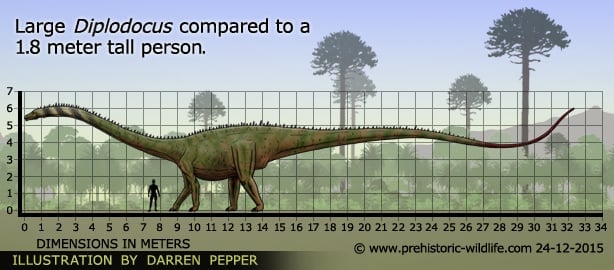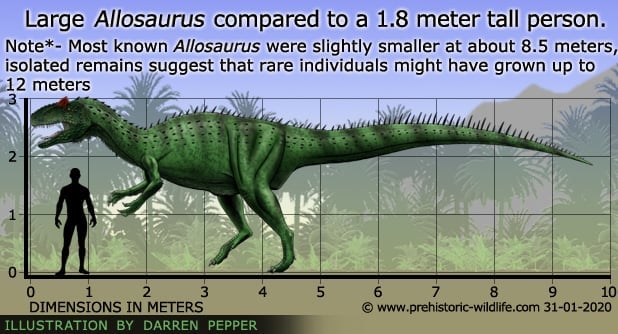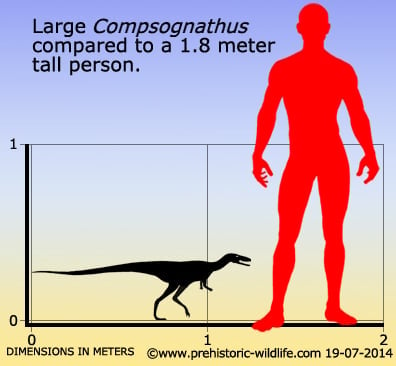|
|
Post by Talira Greycrest on Jun 5, 2021 8:24:54 GMT
That tail looks like a big club on Edmontosaurus plus it almost half it's body length. Despite not having any armour, I wouldn't consider Edmontosaurus to be entirely defenseless. That massive tail could possibly have been used as a weapon. |
|
|
|
Post by Joey12 on Jun 5, 2021 9:33:34 GMT
I agree, plus it had 4 legs to get a better swing at something.
|
|
|
|
Post by "ROCK" the flamin'cowboy on Jun 5, 2021 10:12:38 GMT
He was always everybody's favourite.
|
|
Tix Mascot
Tech guru
Italy is my second homeland
Posts: 11,071  Mini-Profile Background: {"image":"http://4.bp.blogspot.com/-X5mhw13BJ7Y/TwKeZ3uM7YI/AAAAAAAABPw/D82go4Ny_8E/s1600/italy-background-8-787281.jpg","color":""}
Mini-Profile Text Color: 0ef8f1
Mini-Profile Name Color: f40d39
Year of Birth: 1961
Nationality: Norwegian
Mini-Profile Background: {"image":"http://4.bp.blogspot.com/-X5mhw13BJ7Y/TwKeZ3uM7YI/AAAAAAAABPw/D82go4Ny_8E/s1600/italy-background-8-787281.jpg","color":""}
Mini-Profile Text Color: 0ef8f1
Mini-Profile Name Color: f40d39
Year of Birth: 1961
Nationality: Norwegian
|
Post by Tix Mascot on Jun 5, 2021 12:18:33 GMT
Yes! Talira Greycrest keeps feeding us with interesting facts about dinosaurs and other cool stuff. Man, she knows a lot and we are lucky to have her here to expand our horizon. |
|
|
|
Post by gator on Jun 5, 2021 12:21:24 GMT
Tix Mascot, i agree and now has the space to cover more, plus few needed powers to probly run a board.
|
|
|
|
Post by Talira Greycrest on Jun 5, 2021 13:48:28 GMT
This dino is one of longest known from a complete skeleton, its tail alone measuring eight metres long. Name: DiplodocusPronunciation: Di-plod-oh-cus.Meaning of name: "Double beam", in reference to the double-beamed chevron bones located in the underside of the tail.Species: D. hallorum, D. carnegieSize: Depending on species, measured between 24 and 33 metres long, 6 metres tall and weighing between 11 and 15 metric tonnes.Family: Diplodocidae.Diet: Herbivore. Fed on both high and low-growing vegetation.First fossils found: Known from several specimens, the first of which was discovered by Benjamin Franklin Mudge and Samuel Wendell Williston in the Morrison Formation of Colorado in 1877. D. carnegie named by American palaeontologist, John Bell Hatcher, in 1901. D. hallorum named by David Gillette in 1991. Footprints have also been discovered.Lived: 154 to 152 million years ago during the Kimmeridgian stage of the Late Jurassic in what is now the mid-western United States.
 |
|
chilli
Level 5 Council
Posts: 471  Mini-Profile Background: {"image":"https://i.pinimg.com/736x/ac/39/36/ac39363f985aeddc6dce992a0aca5954.jpg"}
Mini-Profile Text Color: f7f9fc
Mini-Profile Name Color: f7f9fc
Mini-Profile Background: {"image":"https://i.pinimg.com/736x/ac/39/36/ac39363f985aeddc6dce992a0aca5954.jpg"}
Mini-Profile Text Color: f7f9fc
Mini-Profile Name Color: f7f9fc
|
Post by chilli on Jun 5, 2021 15:47:08 GMT
its tail alone measuring eight metres long. Wow, that seems almost impossible! Think of how strong the muscles must have been. |
|
|
|
Post by Talira Greycrest on Jun 6, 2021 1:14:57 GMT
It's been suggested that Diplodocus could crack its tail like a giant whip. The tail also provided support when Diplodocus reared up on its back legs, which potentially increased its feeding height to 11 metres.
|
|
|
|
Post by Joey12 on Jun 6, 2021 2:08:41 GMT
Seems a lot of them could whip that tail. That would have been hard on the really short ones.
|
|
|
|
Post by Talira Greycrest on Jun 6, 2021 5:31:52 GMT
This is the largest and most well-known Theropod from the Late Jurassic: Name: AllosaurusPronunciation: Al-low-sore-us.Meaning of name: "Different lizard"Species: A. fragilis, A. europaeus, A. jimmadseniSize: Between 8 and 12 metres long, 3 metres tall and weighing around 2.5 metric tonnes.Family: Allosauridae.Diet: Carnivore.First fossils found: Known from several specimens, the first of which was a fragmentary specimen discovered in Colorado in 1869. First named Antrodemus ("Chamber-bodied") by American palaeontologist, Joseph Leidy, in 1870. A second fragmentary specimen named Allosaurus by American palaeontologist, Othniel Charles Marsh, in 1877. In 1920, it was suggested by another palaeontologist, Charles Whitney Gilmore, that Allosaurus and Antrodemus may be the same animal. During the early 1960's, thousands of fossils were discovered at the Cleveland-Lloyd Quarry in Utah and, after studying the bones, it was decided that Allosaurus would be the official name because Antrodemus was based on poor material.Lived: 155 to 145 million years ago during the Kimmeridgian and Tithonian stages of the Late Jurassic in what is now the western, south-central, midwestern and south-western United States.
 |
|
|
|
Post by Joey12 on Jun 6, 2021 9:42:31 GMT
Looks mean enough.
|
|
|
|
Post by Talira Greycrest on Jun 6, 2021 13:19:06 GMT
This tiny dino is featured in the 'Jurassic Park' franchise: Name: CompsognathusPronunciation: Komp-sog-nath-usMeaning of name: "Elegant jaw"Species: C. longipesSize: Measured between 70cm and 1.4 metres long, 30cm tall and weighing around 3kgs.Family: Compsognathidae.Diet: CarnivoreFirst fossils found: Known from two specimens, the first of which was discovered by fossil collector, Joseph Oberndorfer, in limestone deposits in Bavaria, southeast Germany, during the late 1850s. Named by German palaeontologist, Johann Andreas Wagner, in 1859. Lived: 150 million years ago during the Tithonian stage of the Late Jurassic in what is now France and Germany.  'Jurassic Park' Compsognathus 'Jurassic Park' Compsognathus |
|
Tix Mascot
Tech guru
Italy is my second homeland
Posts: 11,071  Mini-Profile Background: {"image":"http://4.bp.blogspot.com/-X5mhw13BJ7Y/TwKeZ3uM7YI/AAAAAAAABPw/D82go4Ny_8E/s1600/italy-background-8-787281.jpg","color":""}
Mini-Profile Text Color: 0ef8f1
Mini-Profile Name Color: f40d39
Year of Birth: 1961
Nationality: Norwegian
Mini-Profile Background: {"image":"http://4.bp.blogspot.com/-X5mhw13BJ7Y/TwKeZ3uM7YI/AAAAAAAABPw/D82go4Ny_8E/s1600/italy-background-8-787281.jpg","color":""}
Mini-Profile Text Color: 0ef8f1
Mini-Profile Name Color: f40d39
Year of Birth: 1961
Nationality: Norwegian
|
Post by Tix Mascot on Jun 6, 2021 18:01:20 GMT
Looks innocent enough, but don't judge a book by its cover!
|
|
|
|
Post by Talira Greycrest on Jun 7, 2021 1:19:54 GMT
This is what I like best about dinosaurs. They come in all shapes and sizes, from teeny tiny to absolutely huge.
|
|
|
|
Post by Joey12 on Jun 7, 2021 2:18:04 GMT
If they are like little dogs mine thinks she is a pit bull. SO I wouldn't trust it either.
|
|